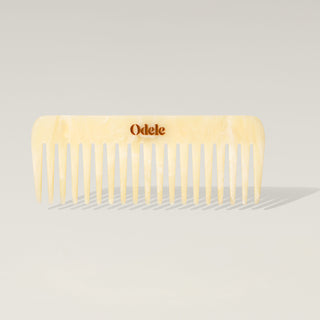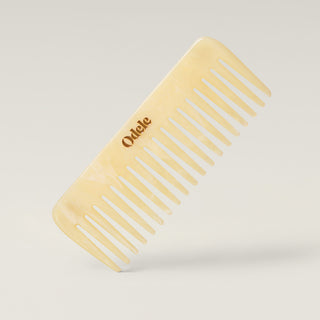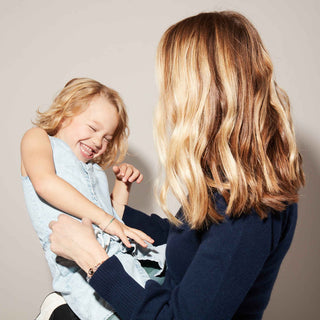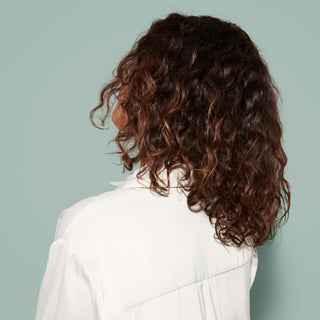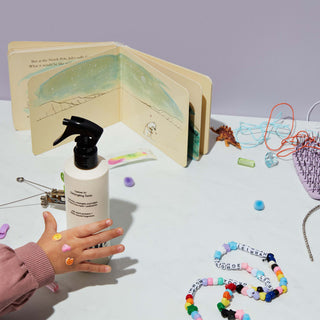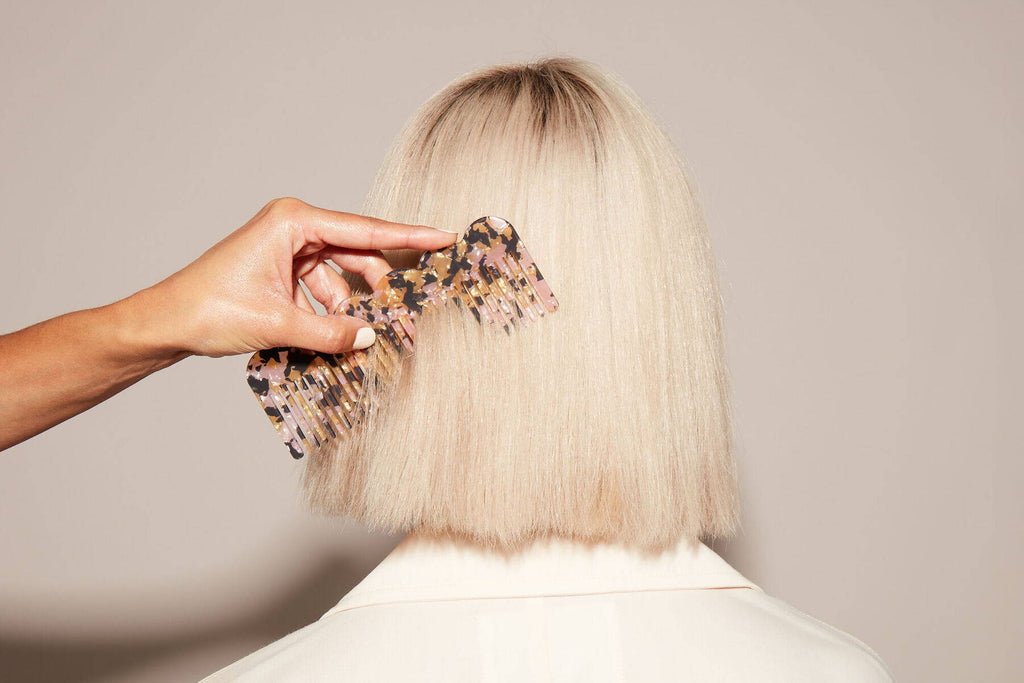Cleaning your hair brush probably isn’t at the top of your regular to-do list. We’re in the business of hair and most of our team confesses they’ve done this only a handful of times (if ever). Isn’t it enough to clean it every couple of months/years when we happen to notice it looks disgusting?
The short answer is no—you/we are kinda disgusting, apparently. Cleaning hair brushes regularly is the hygienic thing to do. Those bristles trap all sorts of ickiness—none of which are doing your hair any favors. Cleaning your brush improves its performance, extends its life and keeps your head healthy. (Plus, it’s super easy.) Here’s how to do it right so we can all stop being gross.
Why cleaning your hair brush is important
First, let’s take a look at your brush(es), shall we?
Chances are there’s a bunch of shed hair in there (no surprise), but you may also spot some tiny grayish clumps stuck to the bristles or matted at the base. That stuff is actually a party of dead scalp skin, dandruff, sebum, product buildup, dust, debris and anything else that’s collected on your head or in your bathroom… like toilet things. Yep, barf.
Guess what happens if you don’t clean your brush? While all that buildup sits there, it creates a perfect breeding ground for bacteria and yeast—especially if your brush spends most of its time in your damp, humid shower. What’s more, you end up brushing all that icky residue back into your clean hair—which can leave your locks looking and smelling, well… funky.
It also makes it harder for your brush to do its job. Grimy, hair-clogged bristles won’t smooth your strands or distribute your scalp’s natural oils as effectively as clean ones. They can even cause breakage if your hair gets snagged in the buildup. Proper care, on the other hand, keeps your brush working at peak performance rather than sabotaging your hair and scalp after every shower.
Convinced? Cool, now here’s exactly how to keep it clean.
What's the best way to clean your hair brush?
Clear the hair after each use.
Remove any hair that’s accumulated in your brush with your fingers or a fine-tooth comb. Use small scissors to cut out tightly wound tangles.
Do a deep clean once a month-ish.
Wash your brush thoroughly to rid it of built-up residue. The more styling products you use, the more frequently you’ll want to wash.
You can opt for the “hands-on” method…
Remove all the shed hair from your brush.
Fill a bowl or sink with warm water. Add a few drops of shampoo (best) or soap (OK, too).
Swish the bristle end of your brush in the water-shampoo solution to loosen buildup. Adjust this step according to your brush type:
Wooden hair brush: To avoid damaging the wood, submerge only the bristles in the water. To clean the wooden part of the brush, wipe it down with a dry or damp towel.
Natural or boar bristle brush: You’re good to let the bristles soak for a few minutes.
Plastic or metal brush: Fully submerge these brushes in the water and let them soak.
Scrub away buildup using an old toothbrush.
Once clean, rinse your brush well.
Shake out excess water and let it dry on a clean towel, bristle-side down.
…or the “lazy” method:
Turns out, you can actually wash your brush in a dishwasher or washing machine cycle. (This method is for plastic brushes only, though; natural or wooden ones likely won’t survive.)
To do it safely:
- Make sure to thoroughly remove any hair from the brush (this will protect the drain).
- If you go the dishwasher route, place your brush securely on the top rack.
- If you go the washing machine route, we recommend washing on a warm, normal cycle and throwing your brush in with a load of sheets or towels to protect it from banging around in the machine.
- Once the wash cycle is complete, remove your brush and let it dry, bristle-side down. (DO NOT put it in the dryer.)
When should you replace your brush?
A good brush that’s properly cared for should last for years (even a lifetime!). As long as the bristles aren’t bent, broken or filthy beyond repair, you shouldn’t need to replace it.


